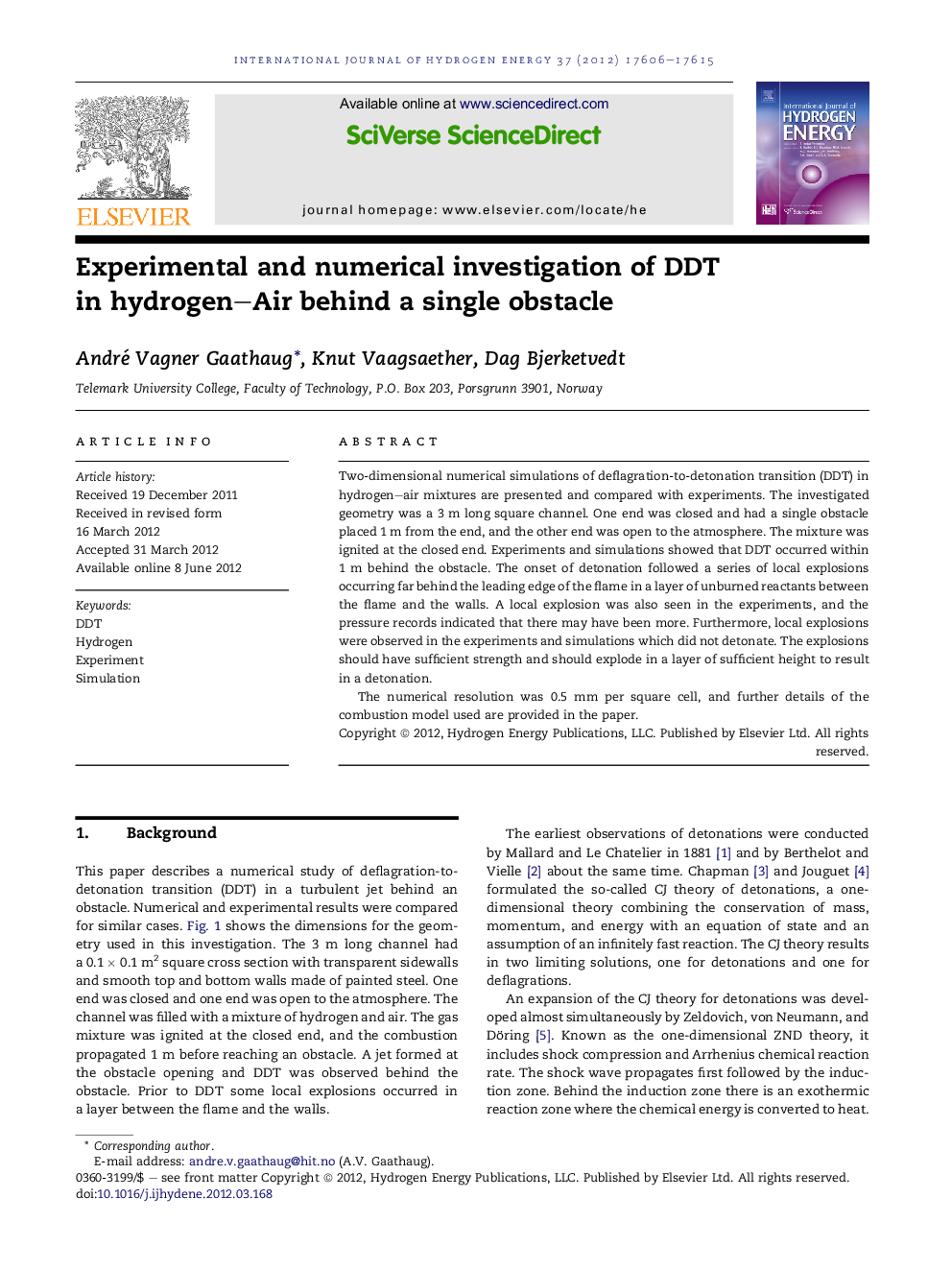| Article ID | Journal | Published Year | Pages | File Type |
|---|---|---|---|---|
| 1270949 | International Journal of Hydrogen Energy | 2012 | 10 Pages |
Two-dimensional numerical simulations of deflagration-to-detonation transition (DDT) in hydrogen–air mixtures are presented and compared with experiments. The investigated geometry was a 3 m long square channel. One end was closed and had a single obstacle placed 1 m from the end, and the other end was open to the atmosphere. The mixture was ignited at the closed end. Experiments and simulations showed that DDT occurred within 1 m behind the obstacle. The onset of detonation followed a series of local explosions occurring far behind the leading edge of the flame in a layer of unburned reactants between the flame and the walls. A local explosion was also seen in the experiments, and the pressure records indicated that there may have been more. Furthermore, local explosions were observed in the experiments and simulations which did not detonate. The explosions should have sufficient strength and should explode in a layer of sufficient height to result in a detonation.The numerical resolution was 0.5 mm per square cell, and further details of the combustion model used are provided in the paper.
► Numerical simulations and experimental studies of H2–air mixtures have been done DDT was observed in several tests. ► Simulations were done using a two-step reaction mechanism. ► The reaction rate was capable of transition from deflagration to detonation. ► Numerical resolution of 0.5 mm per square cell was used. ► Prior to DDT, several small explosions were observed between the flame and wall.
